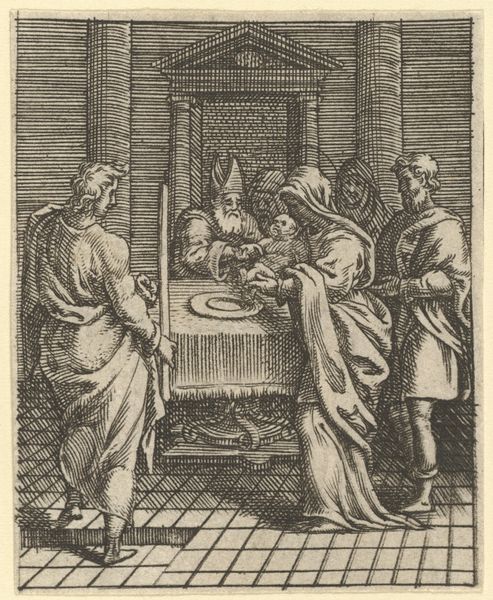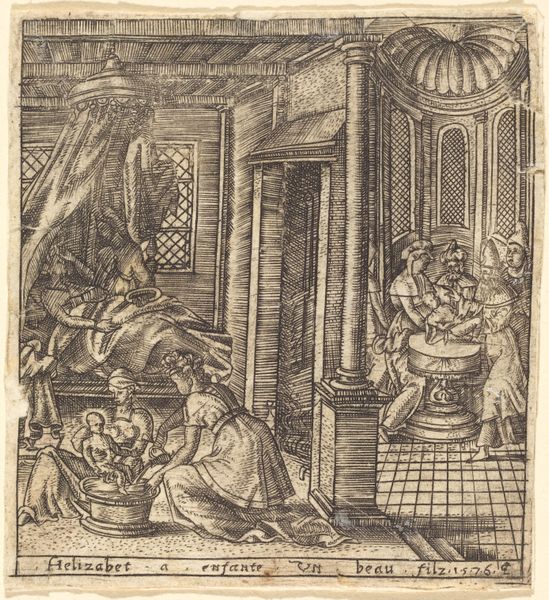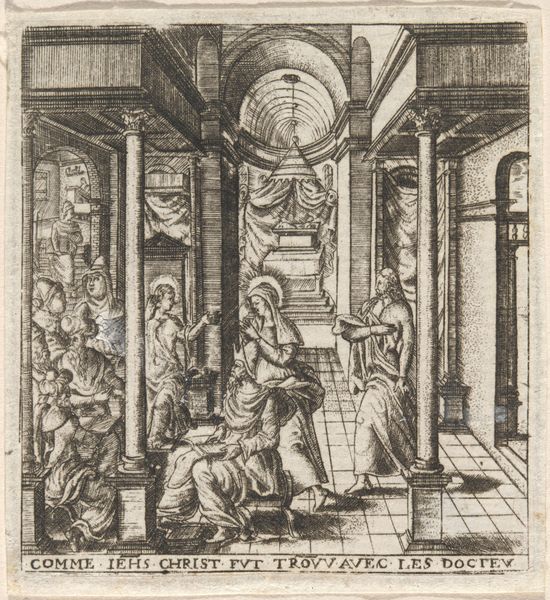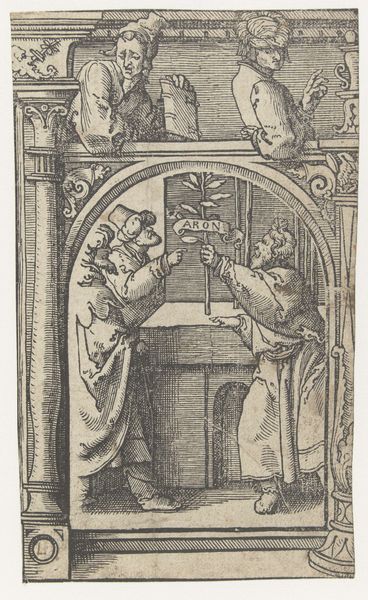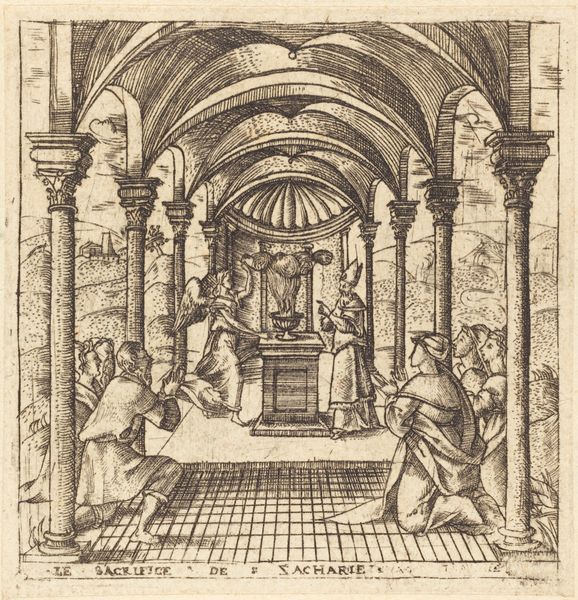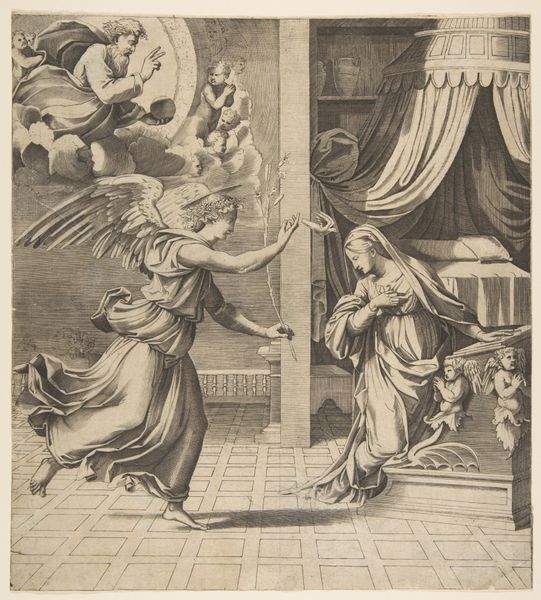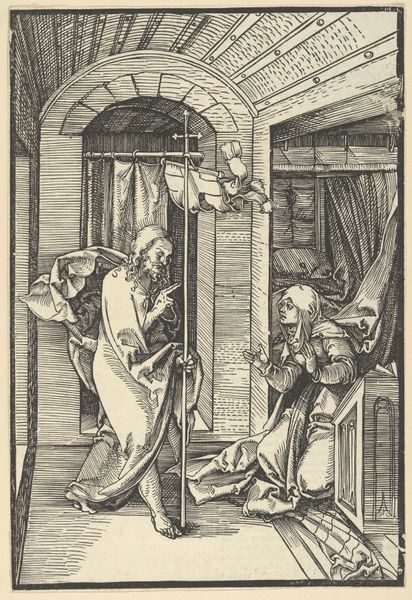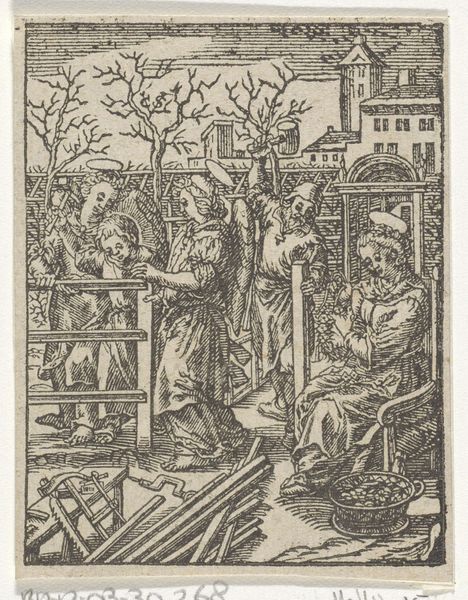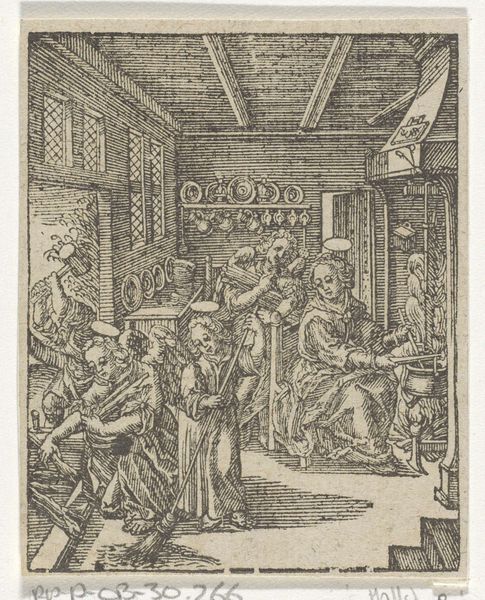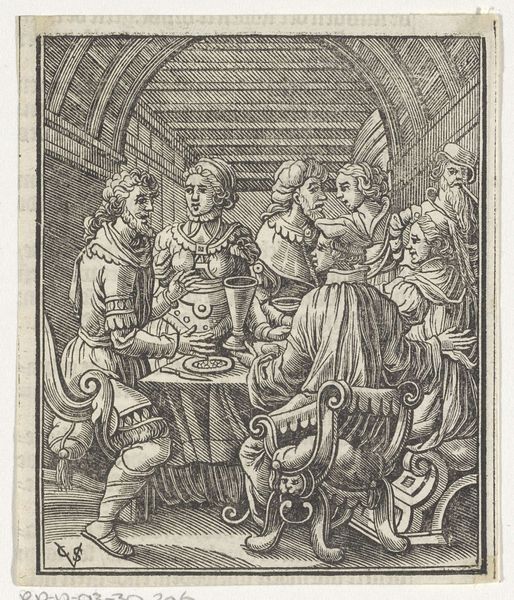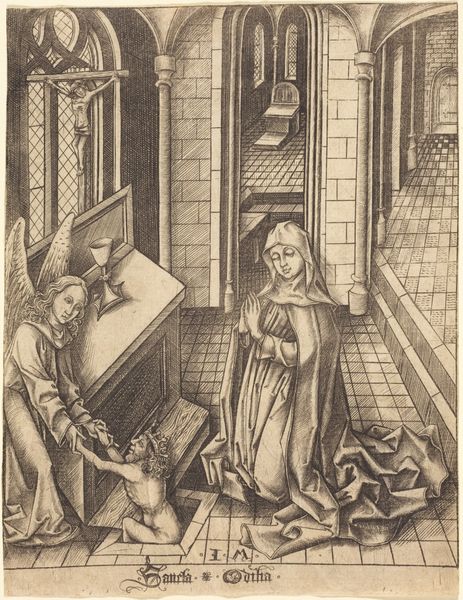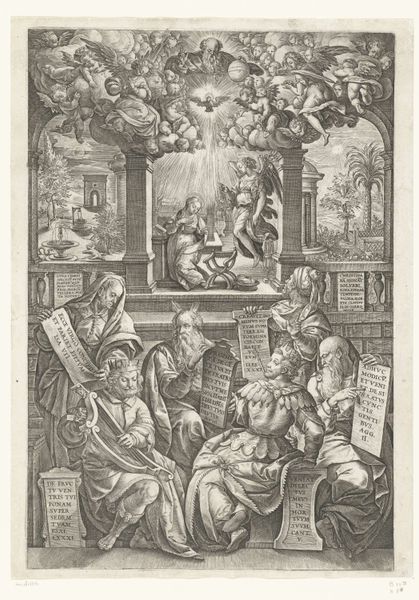
print, engraving
#
narrative-art
#
pen drawing
# print
#
figuration
#
11_renaissance
#
line
#
history-painting
#
northern-renaissance
#
engraving
Copyright: National Gallery of Art: CC0 1.0
Curator: This print captures the scene of The Annunciation, dating from around 1576-1580. It’s attributed to Léonard Gaultier. The medium is engraving, rendered in fine lines. Editor: There’s an otherworldly luminescence despite the monochrome. The fine lines create almost tangible forms. I sense tension here, between the divine and the earthly. Curator: The engraving shows Mary indoors, seated, while Gabriel approaches, holding a scepter, an iconographical identifier of his messenger role. Note the dove emerging from the light between arched openings at the rear, a symbol of the Holy Spirit. Editor: Yes, the dove – it’s interesting how it's presented not just as a symbol but almost as an active agent, bursting with that divine light into a believable, almost mundane scene of domesticity. It’s all so carefully balanced. What do you think Gaultier intended for its original reception? Curator: Prints like these played an important role. They disseminated biblical stories among wider audiences, making these images and narratives far more accessible in society. Beyond the religious instruction, such works carried significant cultural and socio-political capital. Editor: Absolutely, the cultural memory woven into this image is deep, echoing through centuries of art, theology, and lived experience. It's fascinating how the simple arrangement of figures—Mary accepting, Gabriel delivering— carries so much emotional and cultural weight, shaping not just artistic expression, but our understanding of faith. Curator: The linear quality emphasizes clarity, serving the narrative purpose. The inscription “Ave Maria, gratia plena, dominus tecum. Benedicta tu…” serves to immediately communicate the subject matter, reminding viewers of the sacred scene’s verbal exchange, reinforcing faith. Editor: It almost serves as a mnemonic device, lodging the sacred exchange more firmly in the viewer’s memory, not just of the words, but a visual memory loaded with meaning. The scene certainly retains a lot of resonance and a timeless visual harmony. Curator: Seeing how such pieces operated then can prompt considerations about how we access images now. These historical images continue to shape how we interpret visual culture. Editor: Indeed. By studying such engravings, we learn about faith, yes, but we are also investigating the public roles and social histories of images and symbols in shaping culture, perception, and collective memory.
Comments
No comments
Be the first to comment and join the conversation on the ultimate creative platform.
